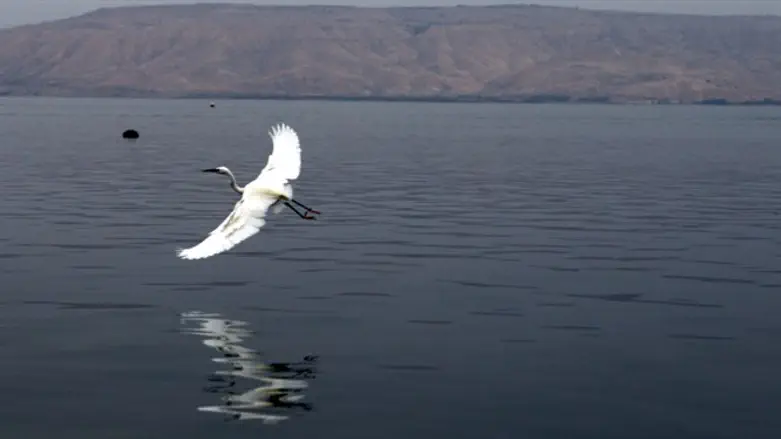
Uri Schor, spokesman for the Water Authority, welcomed the heavy rains Israel has experienced this week. "After five years of drought we have finally had a relatively good year, one that is even slightly above the average in terms of the water sources. If we take the Kinneret, for example, we see that it has risen six centimeters as a result of the rainfall from yesterday until this morning. We're exactly eight and a half centimeters above the lower red line."
"Since the beginning of the season we've seen a rise of 72.5 centimeters. This is a fantastic rise. The average winter rise of the Kinneret level is about 65 centimeters, so we are above average.
Schor told Arutz Sheva that the winter is not yet over and that a further rise in the Kinneret is expected. "The rain now in the north and also over the weekend will add many more centimeters to the Kinneret, which is good.
"Most of the reservoirs in the north are completely filled. This is one of the factors that has contributed to the Kinneret's rise. The soil is saturated and the rain flows down to the Kinneret. The strong flows will continue to give their water to nature and the Kinneret. There is still the entire month of March in which we pray there will be a lot more rain," Schor said.
He stressed that one good winter would not erase the effects of five straight years of drought. "We all pray for good years of blessing, but we must be prepared for the opposite, both on the state level and in our individual use of water, which needs to be more efficient to prevent water waste. Because despite this beautiful rise, the Kinneret is still four and a half meters too low."
"It is an impressive rise, but during the summer the sea levels fall dramatically. We also have to sustain our water because of climate change. Over the past thirty years, we have been seeing a decrease in the amount of rain in our region, coupled with an increase in demand for water due to population growth and quality of life. This is why the State continues to build more desalination and recycling plants, so we are also establishing a complete system that is supposed to bring desalinated water from the west to the Kinneret in order to add water to it so that in a time of need we will not lose it as a source of drinking water. But everyone is truly happy and pleased with [the current rise]."